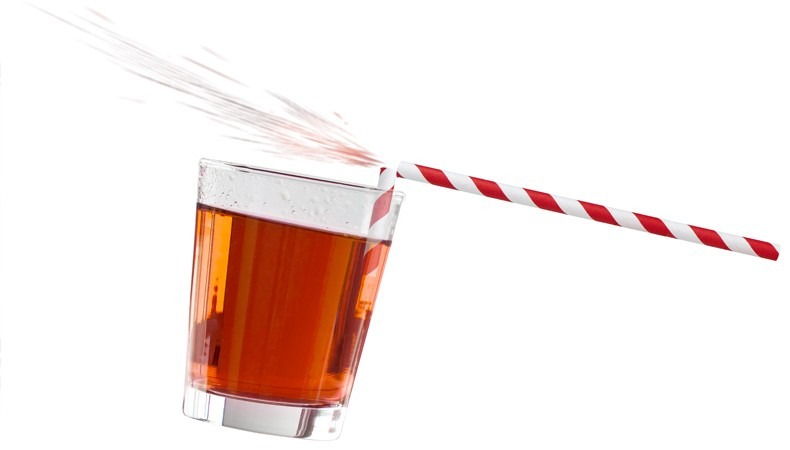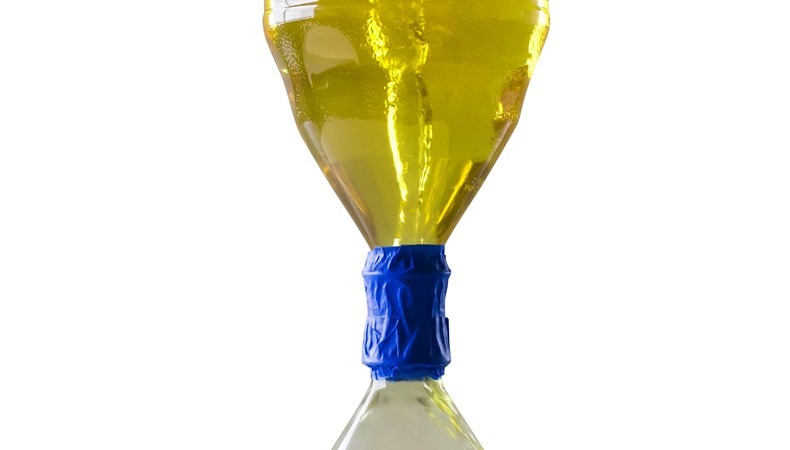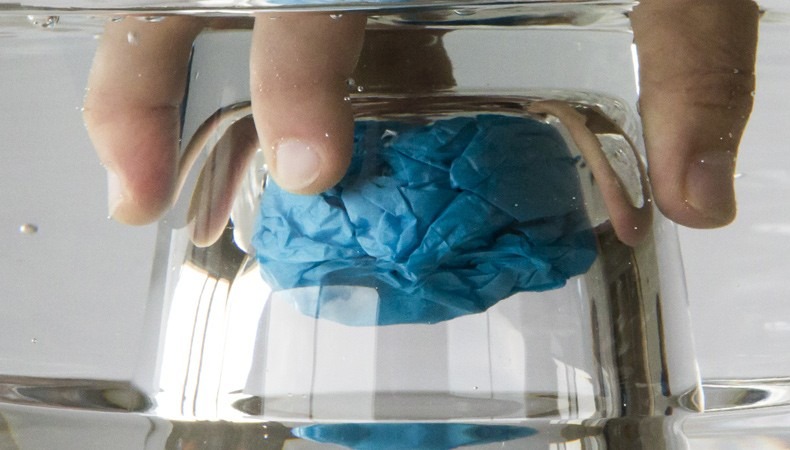The Venturi Effect
Grades 2 and 6 (Ontario)
Elementary cycle 3 (Quebec)
The Venturi Effect can be hard to explain, but this showy experiment helps it all make sense, with simple materials.

Share :
Curriculum links
Grade 2
Science and technology: Understanding Earth and space systems
- Air and water in the environment
- Investigate, through experimentation, the characteristics of air
Grade 6
Science and technology: Understanding structures and mechanisms
- Flight
- Use scientific inquiry/experimentation skills to investigate the properties of air
- Identify the properties of air that make flight possible
Elementary cycle 3
Science and technology: The material world
- Forces and Motion
- Pressure (e.g., pressure in a balloon, on an airplane wing)
Materials
- A small, clear drinking glass (plastic works fine)
- A straw
- Water
- Food colouring
- Scissors
- Scotch tape
Procedure
- Fill the drinking glass with water, leaving 1/2 to 1 inch (1.25 to 2.5 cm) of space at the top of the glass.
- Cut the straw into two short pieces.
- Tape one piece of the straw to the inside of the glass, with one end in the water, and the other end sticking out over the top of the glass.
- Set the glass on a table, and kneel or sit so that the glass is at eye level.
- Hold the other piece of straw so that half of its opening is covered by the straw in the glass.
- Blow into the straw.
- Observe and record what happens.
Tips: Cut an “L” shape from a piece of cardstock, and tape both pieces of straw to it for greater stability. If no water sprays out, shorten the straw you are blowing into.
Suggestions for art activities
Blown-art projects are lots of fun (messy, but fun!). Adapt your Venturi experiment to use thin paint, and blow at a large sheet of paper. The resulting painting could be a finished piece, or it could become the background for a larger work. It’s all up to you and your class!
In the Museum, to help younger children visualize air molecules and understand what is happening when the molecules are compressed, we often have them become the molecules and act out the process. Older classes could also have fun making up skits to explain what is going on in this experiment, and how the water can possibly be sucked up and blown out this way!
You may also be interested in

A viscous vortex
Watch what happens when you drop food colouring into milk in this fascinating experiment that requires few materials.

Tornado-in-a-bottle
Tornados, whirlpools, even galaxies are all vortexes. Explain how they work with this fun and simple tornado-in-a-bottle.

Napkin in water
If you’ve got budding magicians in your class, this is the experiment that requires few materials that is made for them!